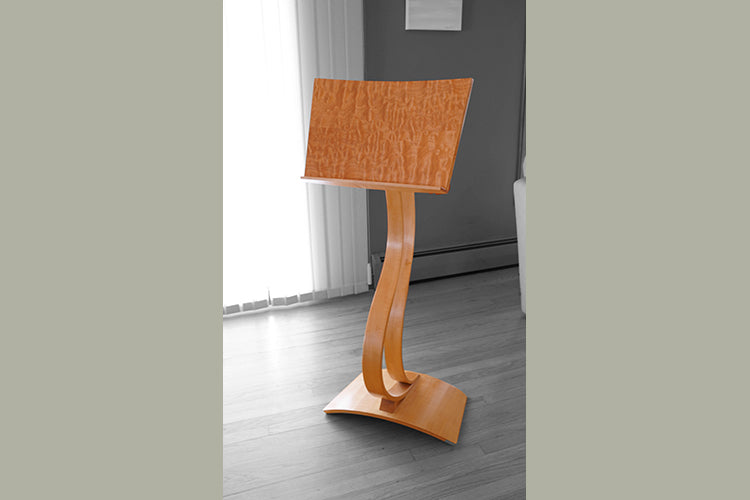This music stand was inspired by the elegant design of Wendell Castle's creation, which can be found in the Art Institute of Chicago Museum. Castle’s stand is graceful with clean, elegant lines and tapered legs of bent lamination. Its lines are simple yet gorgeous. But, while the stand is visually stunning, it lacks functionality. Nothing is adjustable.
To address this issue, the design of this stand incorporates a long sliding dovetail that allows for full adjustment up and down while maintaining its graceful aesthetic. Long dovetailes are not very forgiving. A few thousandths of an inch too wide and its movement is sloppy. Too much and it won’t move at all. Seasonal wood movement must be accomodated too. Tilt adjustment is achieved with a wood mechanism as well.
Different methods were used to obtain the bends. Maple is extremely hard and would rather crack than bend. A single board cut into multiple, very thin laminations, then finely milled and glued back together on a bending form results in a laminated board that is MUCH stronger than the original board. The bends achieved in the music stand uprights required pre-bending many thin layers with steam first and left clamped overnight on a bending form. The laminations were then glued together with a very rigid, urea glue and clamped on a bending form until dry. Then the fun of shaping and jointing begins. The front and back uprights each required their own bending form.
The base and music holder were created with multiple laminations of thin plywood which were then covered with veneer. These were also achieved using a bending form but, this time, in a vacuum press.
Finally, the fun part of all woodworking is the joinery. Woodworkers will appreciate the challenge of joining curved parts to curved parts. There was lots of that here. Including the design, mockups, milling and finish work, there are over 180 hours in this stand.
maple / quilted maple
45-51 ½” H, 20 ¾” W
Free shipping within the continental US (excludes AK and HI).










